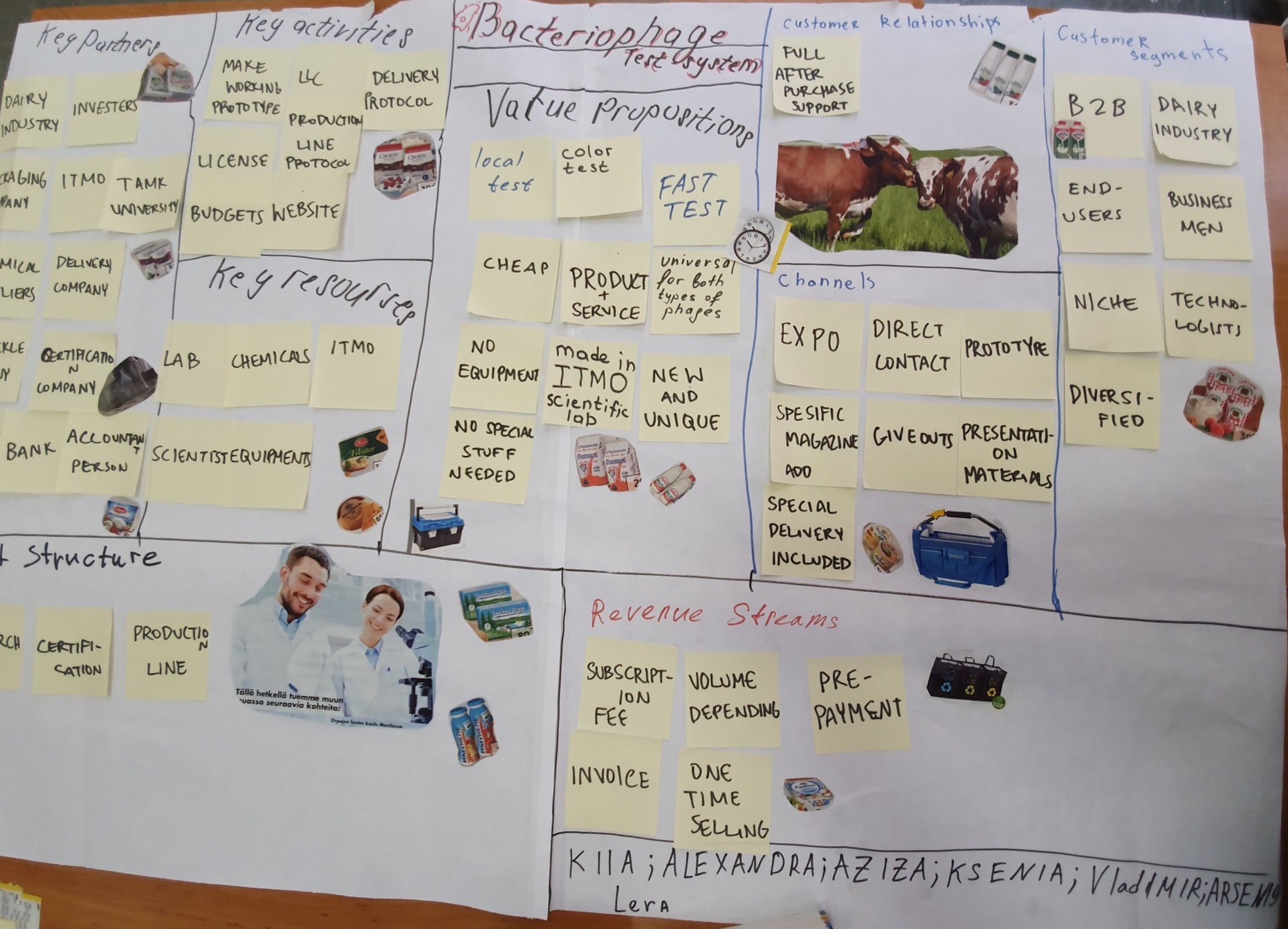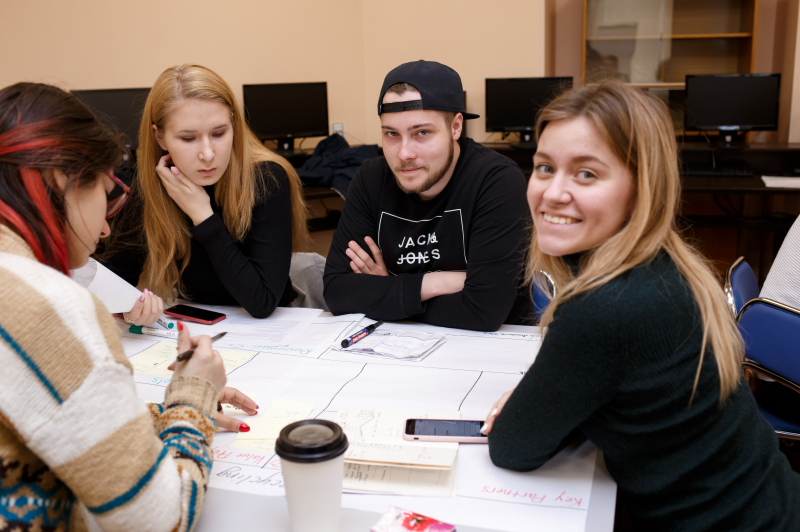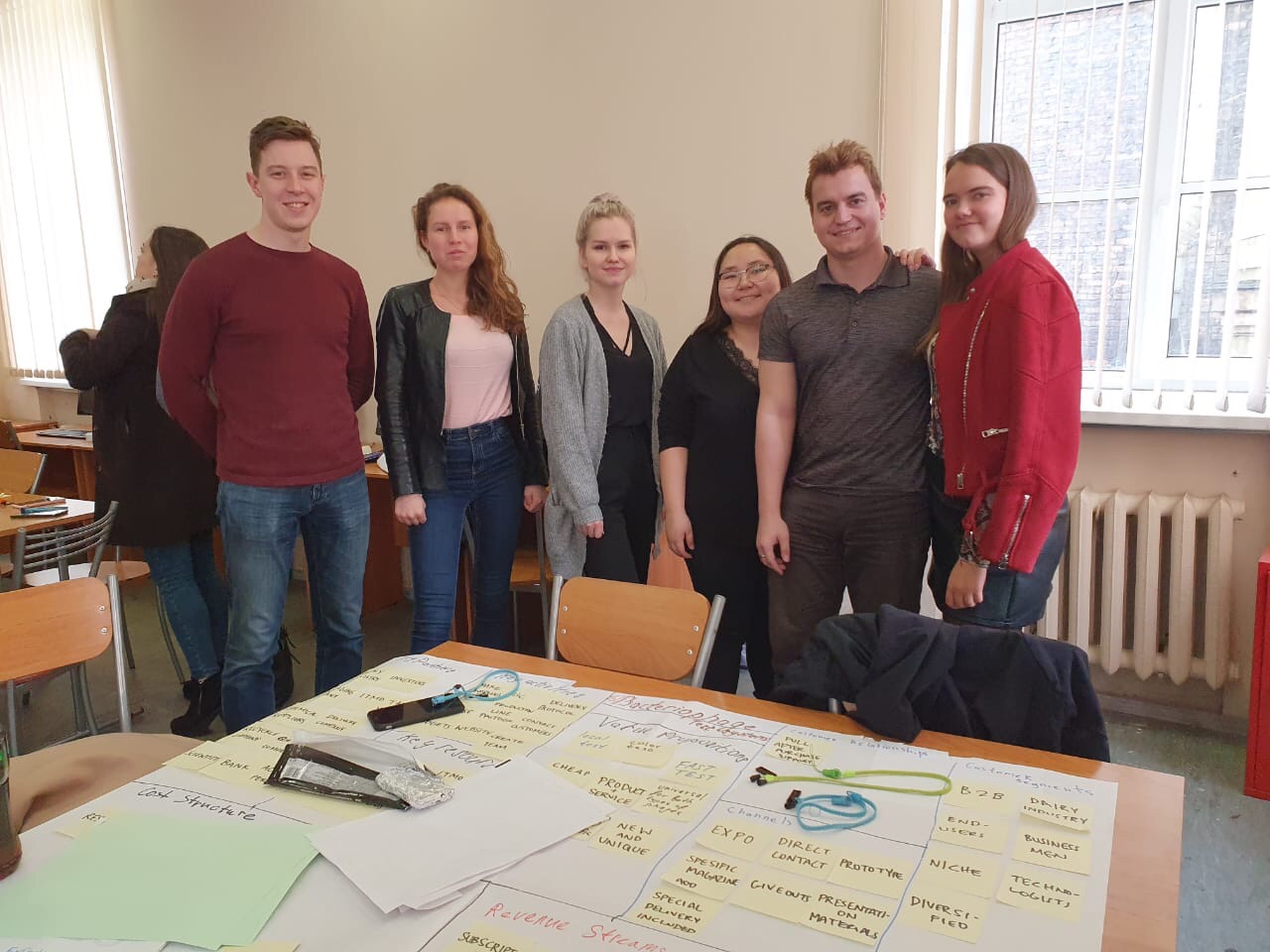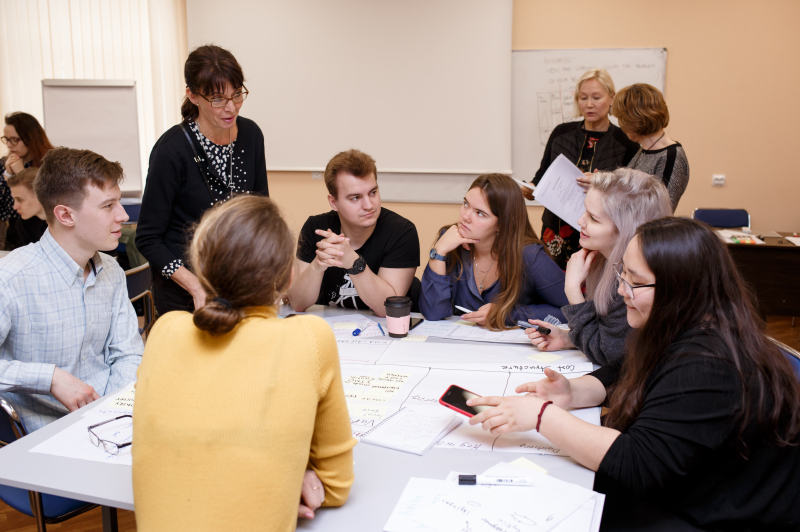What is Business Model Canvas and how can it help startupers in forming and developing their business ideas in the shortest amount of time possible? This was the focus of an intensive workshop recently hosted by ITMO University, the participants of which included over 20 students (including SCAMT students) from Russia and Finland. The workshop was delivered by experts from Tampere University of Applied Sciences (TAMK), who also shared about other tools for management of business processes and the difference in business approaches in Russia and Finland.
About Business Model Canvas
The Business Model Canvas is a strategic management tool that provides a template for documenting business ideas, analyzing them and identifying their strengths and weaknesses. In its essence, the method, which was invented by the Swiss business analyst Alexander Osterwalder, can be presented as a common algorithm for solving the smorgasbord of single-type tasks involved in the creation of business models.
The model consists of nine blocks, which can be divided into four larger groups: Infrastructure, Offering, Customers, and Finances. Each of the blocks describes a unit of an organization’s business model, namely its key partners, resources and activities, offerings and value propositions, relationship with customers and customer segments, channels of distribution, cost structures and sources of revenue.

The Business Model Canvas served as a foundation for another business tool: the lean startup model. Though the latter is more relevant to projects on the earlier stages of their existence, the two techniques serve the same purpose: the facilitation of strategic management and the identification of priority areas through visual representation of business models.
“The main idea behind the tool is visualization. Apart from its other benefits, it can prove particularly useful for international teams which face the challenge of finding a common working language between the representatives of different countries and cultures. What’s more, having such a visual model at hand means that you no longer have to spend an enormous amount of time and effort on ploughing through huge reports. Of course, once you arrive at the business plan formation stage, there’s no getting around official documents, but at these first stages the Business Model Canvas can be a massive help in allowing you to present your ideas quickly, clearly and effectively. And it has to be said that it works equally well for all types of ideas,” points out Tiina Wickman-Viitala, a lecturer at TAMK.
Intensive workshop at ITMO University
“What we required from this year’s participants was having a good command of English and their own business idea,” adds Irina Sergeeva. “On the first day, we started by dividing the students into five mixed Russian-Finnish teams of five-six people each. Their task was to master the Business Model Canvas, apply it to the cases offered, prepare a presentation and defend it before a panel of experts, all in the course of three days of intensive teamwork.”
The team made of students of the ChemBio cluster (SCAMT laboratory) put forward a case developed by the laboratory of microbiology. A test system aiming to solve the problem of detection of bacterial viruses in fermented dairy products even in conditions of large-scale dairy factories, it would allow to simplify and accelerate the production process. That is because, with its help, the testing can be done directly at the factories, leaving out the additional step of taking the starter culture to a special lab.
.jpg)
“SCAMT has an industrial laboratory that develops prototypes and end products which we would like to launch on the market. At this workshop, we wanted to explore the tools that would allow us to do this in the most effective way possible. In my opinion, the Business Model Canvas presents a great solution to fulfil our aspiration,” comments Alexandra Lebedeva, a Master’s student at the ChemBio cluster.
Going forward, Tampere University of Applied Science and ITMO University plan to continue cooperating on the organization of joint workshops. To that end, the Finnish university has already applied for a grant of the FIRST+ mobility program. As previously mentioned, this is a Russian-Finnish student and teacher mobility program that encourages network partnerships between higher education institutions of Russia and Finland. In line with this commitment, the program supports student and teacher mobility between the universities of the two countries, as well as the conduct of joint intensive workshops in Russia.

(author Elena Menshikova)

